How to Care for a Wood Cutting Board so that it stays beautiful for years. Do you have a wood cutting board you have recently purchased or one that you’ve had for years? These tips will help to keep your cutting board lasting forever or make your old ones pretty again.
We sell these vintage style noodle boards in our shop and we seal them before they are sent. But to keep up on your board we offer you these directions so it can last for years to come.

Wood
Let’s start from the beginning: wood is a natural product. This means that it is beautifully drawn by mother nature. It also means that it has some erratic, natural properties. This is because a wooden cutting board works. We don’t mean that it necessarily brings food to the table, although it can be used for that, of course. With working wood we mean that it expands and shrinks depending on humidity and temperature. It’s alive, as if were. Because of this, cracks and gaps can occur. Besides the fact that these cracks and gaps are not particularly attractive, they can also become an easy hang out for bacteria. Something we want to avoid.
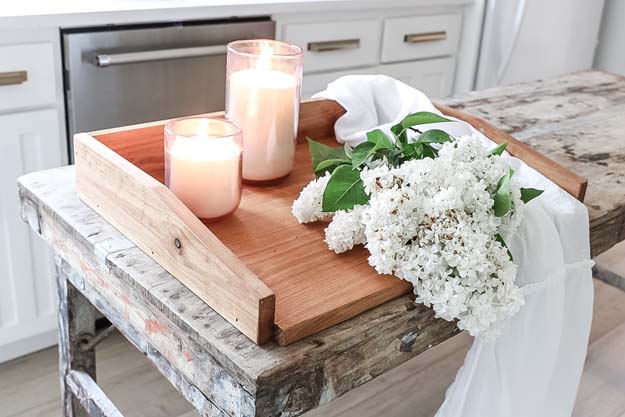
Antibacterial effect
Some people say that a wooden cutting board is not hygienic. This is in fact not true. When you cut, small grooves will be made in the board, and bacteria will collect there. The thing is, that a groove in a plastic cutting board will (partly) close around the dirt inside the groove. Therefore, when you wash the board, it is not guaranteed that you wash off all the dirt from the grooves. A wooden cutting board does not close around the dirt, but will open during cleaning. This way, you can for sure wash everything out of the groove. Besides this, the tannin in the wood helps quite a bit, by killing a big part of the bacteria.
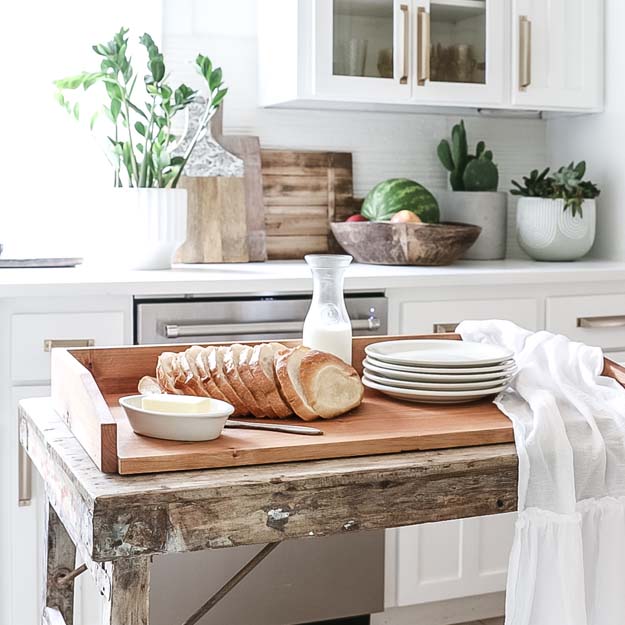
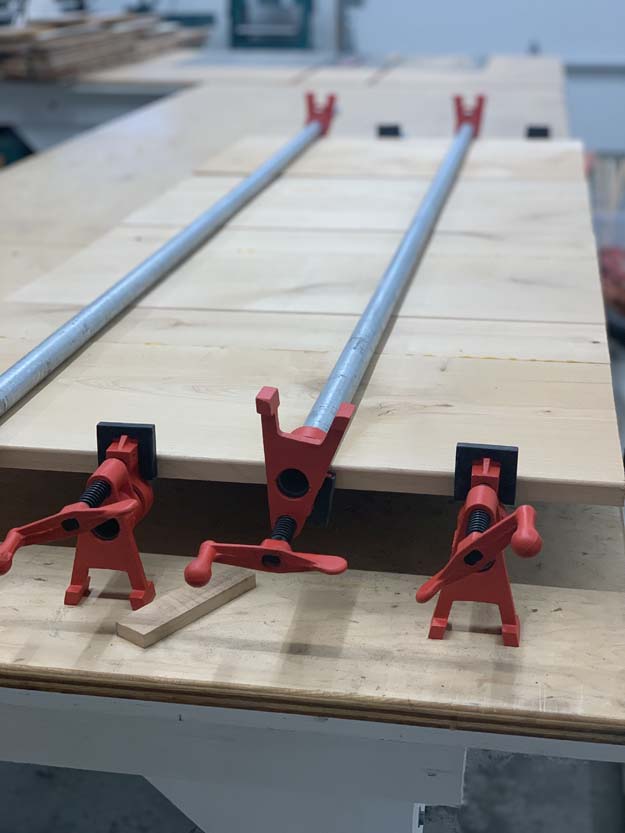
Cleaning after use
When you have used a wooden cutting board, it is best to rinse it and wipe it with a dishwasher brush or a cloth. You don’t always have to use dishwashing detergent, however this is advised after cutting raw meat, poultry or fish. Make sure you dry the board properly, putting it away wet will usually still cause the wood to work. After drying it, preferably store it upright. It is important that the grain of the wood is standing vertically. This greatly reduces the chances at warping.
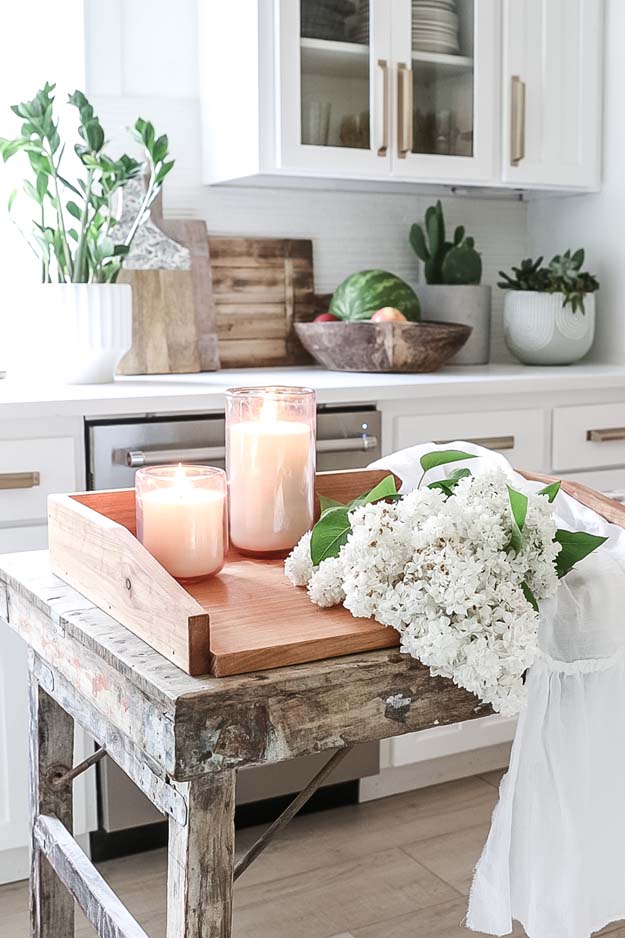
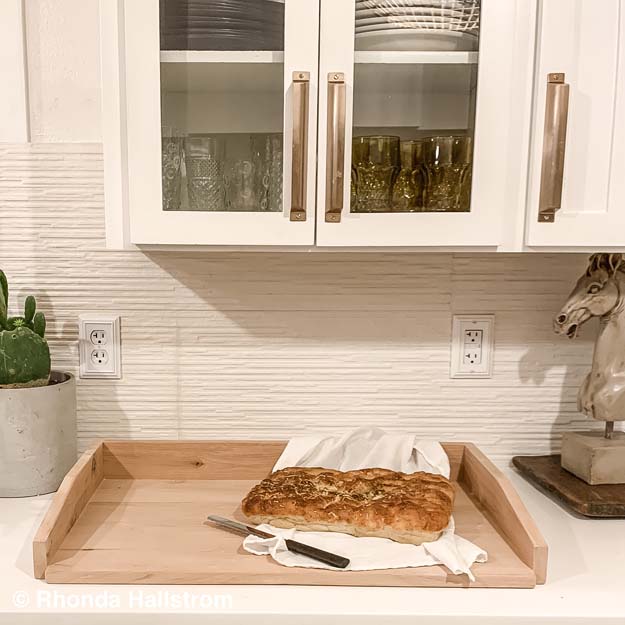
Can you wash a wooden cutting board in the dishwasher?
A wooden cutting board absolutely doesn’t like dishwashers. It is abuse. The board gets super wet and hot in the dishwasher and then cooled down and dried super quickly. That is begging for cracks. Not to mention the corrosive stuff that you find the dishwasher detergent…
I love to make a snack tray or charcuterie board. Our favorite place to hang out is out on our veranda with our farmhouse table.
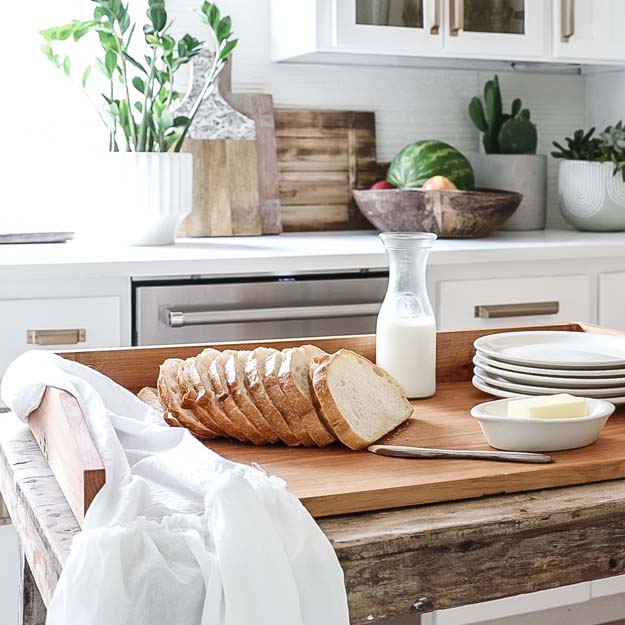
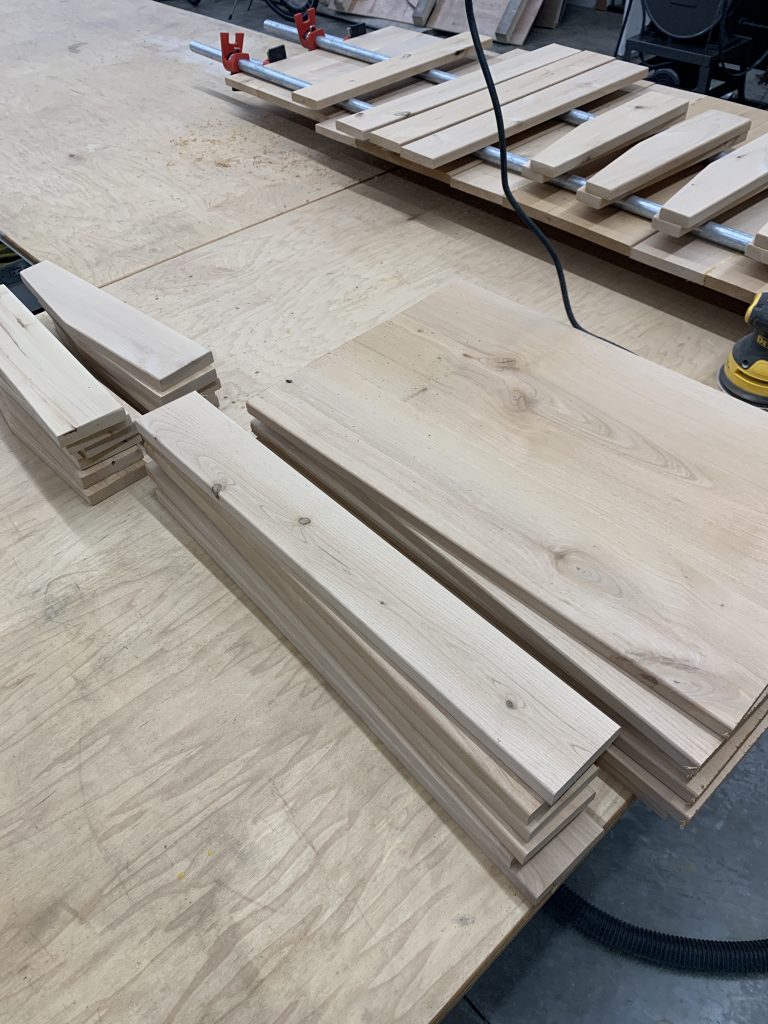
Oil a wooden cutting board
Besides keeping a wooden cutting board clean, it is also important to keep the wood in top notch condition. A little oil goes a long way. If the wood is saturated with oil, it closes and forms a protective layer on the wood. For oiling a wooden cutting board is best to use an odor-and flavorless oil. Almond or grape-seed oil are good choices. (Note: almond oil is not recommended when you have a nut allergy) White mineral oil is also suitable, but we recommend cutting board oil.
Do not use olive oil because this will become sticky and gross. Of course, that is not what you want.
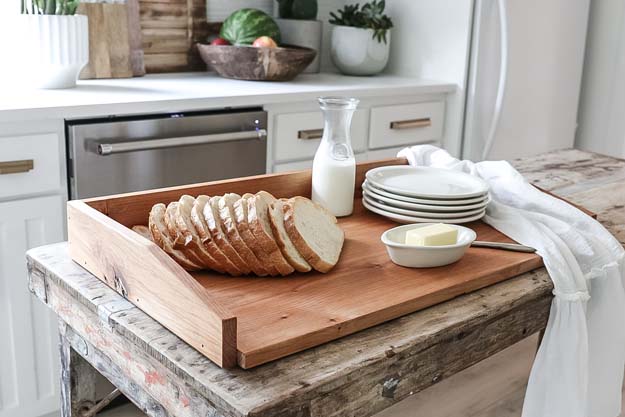
How to Care for a Wood Cutting Board
When you are going to oil a wooden cutting board, step one is cleaning the board. First rub the board with lemon juice or white vinegar. Sprinkle (sea)salt on top and take a paper towel or a clean dish cloth. Rub the salt and the juice or the vinegar over the shelf and leave it to soak for 15 minutes. This makes the cutting board squeaky clean. Rinse the cutting board and dry it with a cloth or paper towel. It is important that the board is well dried before oiling. The oil will be absorbed better that way.
The board is now ready to be oiled. Drop some of the oil on the shelf and rub it in with a piece of kitchen paper or a clean dish cloth. Give the board plenty of time to absorb the oil very well before you use it again. Repeat the oiling after the rest time, keep going until the board no longer absorbs oil. This means that the board is saturated
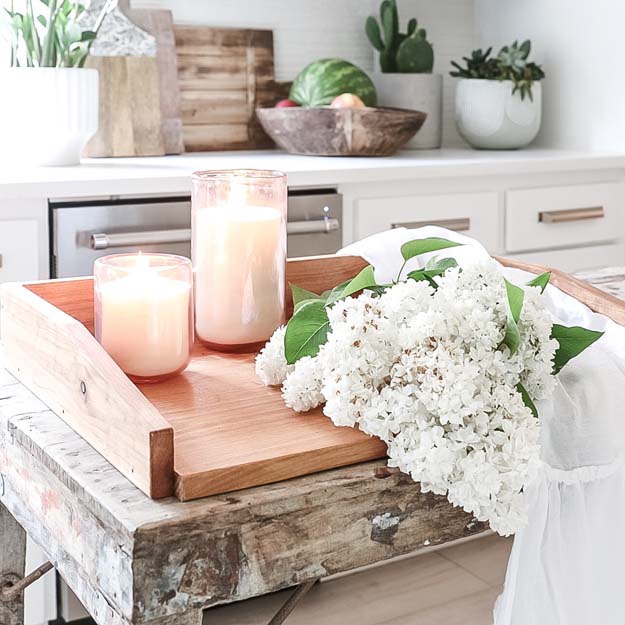
Small maintenance
The full process which includes the cleaning with acid and salt, is only necessary to do every 2 to 4 months (depending on the frequency of use). In between, you can just oil the board after washing and drying it like you do after daily use. This way, the wood stays in top notch condition, also between the major maintenance moments. Depending on your frequency of use, you do this every other week, or once a month. When the cutting board starts feeling dried out, you know it is time for a new oil layer.
History of the noodle board
The noodle board dates back as late as the 1800’s. There was not much kitchen space back then so this made a portable way of moving around. Then when the stove top was not in use this used less counter-space. The board had ideal construction for rolling out noodles – There are raised edges on three sides of the top to prevent flour from spilling off the board. To make the process of rolling easier, the noodle board is covered with flour, as is the rolling pin. The size of the board is fairly large, but has the perfect dimensions to roll out the dough.
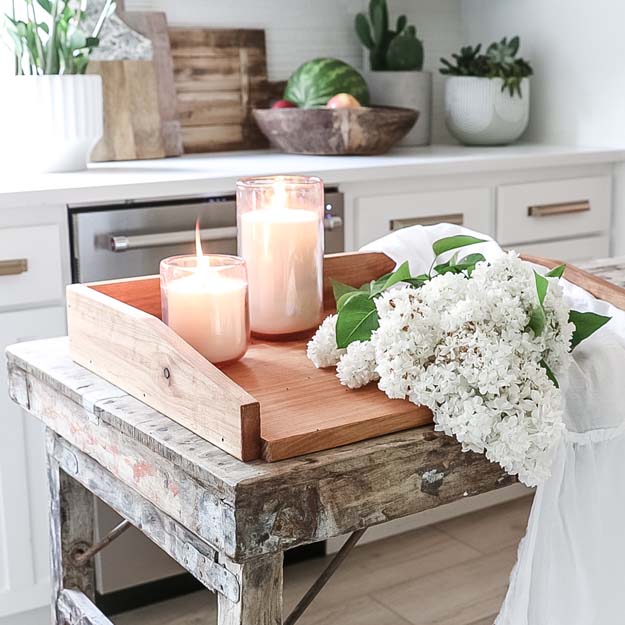
Cutting board for life
If you treat your cutting board regularly with some love, attention and oil, you and your cutting board will have a long, happy relationship.

 Hey there! I am Rhonda Hallstrom, creator and designer of Hallstrom Home. Making beautiful home decor is my way to inspire you to follow your dreams and amibitions. So come check out my shop and blog, I hope to get to know you. Thanks for stopping by at Hallstrom Home, Rhonda.
Hey there! I am Rhonda Hallstrom, creator and designer of Hallstrom Home. Making beautiful home decor is my way to inspire you to follow your dreams and amibitions. So come check out my shop and blog, I hope to get to know you. Thanks for stopping by at Hallstrom Home, Rhonda.
Great advice! I’ve never oiled a cutting board before but I’m going to now!
Yes! It’s a great trick!